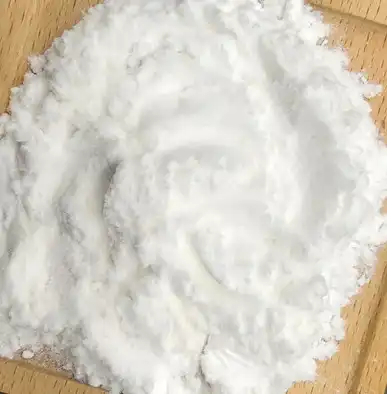How Much Ceramide Powder Should I Use in My Skincare Routine?
Ceramide powder has emerged as a powerful ingredient in skincare formulations, known for its exceptional ability to strengthen the skin barrier and improve overall skin health. As more skincare enthusiasts begin to incorporate this ingredient into their DIY formulations or seek out commercially available products containing ceramides, a common question arises: how much ceramide powder should you actually use in your skincare routine? Finding the right balance is crucial to harness the maximum benefits of this skin-identical lipid without overwhelming your skin or wasting product.
What is the optimal concentration of Ceramide Powder for effective skincare results?
Understanding Ceramide Powder's Role in Skin Barrier Function
Ceramide Powder represents a concentrated form of ceramides, which are naturally occurring lipids that make up approximately 50% of our skin's outer layer. These lipids play a crucial role in maintaining the integrity of our skin barrier by acting as the "cement" that holds skin cells together. When incorporated into skincare formulations, Ceramide Powder helps replenish depleted ceramide levels, strengthening the skin's protective barrier against environmental aggressors. This makes products containing Ceramide Powder particularly beneficial for those with dry, sensitive, or compromised skin conditions such as eczema or rosacea.
Scientific Evidence for Effective Ceramide Concentrations
Research studies have shown that ceramide efficacy is concentration-dependent, with optimal benefits typically observed in the 0.2-2% range for Ceramide Powder in finished skincare formulations. A study published in the Journal of Dermatological Science demonstrated that formulations containing 0.3% ceramide concentration significantly improved barrier function in subjects with compromised skin after just 4 weeks. Increasing the concentration to 1% provided enhanced benefits for extremely dry skin conditions. The effectiveness appears to plateau at approximately 2% concentration. When working with pure Ceramide Powder for DIY formulations, this translates to approximately 0.2-2 grams of powder per 100 grams of your finished product.
effectiveness appears to plateau at approximately 2% concentration. When working with pure Ceramide Powder for DIY formulations, this translates to approximately 0.2-2 grams of powder per 100 grams of your finished product.
Customizing Ceramide Powder Concentration for Different Skin Types
The ideal concentration of Ceramide Powder varies depending on your skin type and specific concerns. For normal skin seeking preventative benefits, concentrations around 0.2-0.5% are typically sufficient. Those with dry skin may benefit from middle-range concentrations (0.5-1%), which provide enhanced barrier repair and moisture retention. For severely compromised skin barriers, such as those associated with conditions like eczema or psoriasis, higher concentrations (1-2%) may be warranted. Seasonal adjustment of Ceramide Powder concentration can also be beneficial—increasing concentration during winter months and reducing during humid summer periods.
How can I incorporate Ceramide Powder into my existing skincare formulations?
Selecting Compatible Base Formulations for Ceramide Powder
Ceramide Powder requires careful consideration when choosing compatible base formulations. Oil-based serums and emulsions typically provide the ideal environment for Ceramide Powder integration, as ceramides are lipid molecules that naturally align with other oils. Water-based formulations present greater challenges due to solubility issues, often requiring the addition of solubilizers or emulsifiers. For DIY enthusiasts, pre-dissolving Ceramide Powder in a compatible carrier oil at a ratio of approximately 1:10 before adding to your main formulation can significantly improve dispersion. Ceramides tend to perform optimally in slightly acidic environments (pH 5.0-6.0) that mirror the skin's natural pH.
Proper Mixing Techniques to Ensure Uniform Distribution
Achieving uniform distribution of Ceramide Powder requires specific mixing techniques to prevent clumping. The temperature-controlled incorporation method yields superior results—gently warming your base oils to 50-60°C before slowly adding the Ceramide Powder while maintaining constant stirring. For those without precision heating equipment, thoroughly mix your measured Ceramide Powder with a small amount of carrier oil to create a concentrated paste, then gradually incorporate this mixture into your main formulation with vigorous stirring. Continue mixing for 5-10 minutes after visual homogeneity is achieved to ensure microscopic distribution is complete.
Timing and Frequency: When to Apply Ceramide-Enhanced Products
For maximum benefits, Ceramide Powder formulations should be applied to slightly damp skin, ideally within 3-5 minutes after cleansing or toning. Regarding frequency, daily application of an appropriately formulated product yields superior results compared to sporadic use of higher concentrations. Most research indicates that twice-daily application provides optimal benefits for compromised skin barriers, while once-daily application may suffice for maintenance in those with normal skin. Ceramide Powder products should be applied after water-based serums but before heavier occlusives, allowing them to form an effective moisture-retention layer.
When should I adjust my Ceramide Powder dosage for seasonal or skin condition changes?
Responding to Environmental and Climate Factors
Environmental conditions influence your skin's ceramide requirements, necessitating adjustments to your Ceramide Powder dosage throughout the year. During winter months or in arid climates, consider increasing Ceramide Powder concentration by 25-50% higher than your baseline dosage. Humid summer environments generally place less stress on your skin barrier, potentially allowing for slight reductions. Those living in highly polluted areas might benefit from consistently higher Ceramide Powder concentrations, potentially supplemented with antioxidants that work synergistically with ceramides.
Adjusting for Skin Barrier Disruptions and Recovery Phases

When your skin barrier experiences significant disruption—whether from over-exfoliation, aggressive treatments, or inflammatory skin conditions—temporarily increase your Ceramide Powder concentration to the higher end (1.5-2%) to accelerate barrier recovery. Maintain this approach for 1-2 weeks while simplifying your routine to eliminate potential irritants. For those undergoing professional treatments like chemical peels or laser procedures, proactively increase Ceramide Powder concentration beginning before treatment and continuing afterward to minimize recovery time. Individuals with chronically compromised barriers may benefit from cycling between moderate and higher Ceramide Powder concentrations.
Monitoring Skin Response and Making Evidence-Based Adjustments
The most reliable method for optimizing your Ceramide Powder dosage involves systematic observation of your skin's response. Establish a baseline assessment of your skin's barrier function before introducing Ceramide Powder, then maintain consistent usage for at least 3-4 weeks while documenting changes. Positive indicators of appropriate dosage include reduced sensitivity, improved moisture retention, and diminished fine dehydration lines. Conversely, unusual congestion or product pilling may indicate excessive concentration.
Conclusion
Finding the optimal amount of Ceramide Powder for your skincare routine requires understanding your unique skin needs and adjusting accordingly. The general recommendation of 0.2-2% concentration provides a solid starting point, but the true value comes from customizing this range based on your skin type, environmental factors, and specific concerns. Remember that consistency in application often yields better results than higher concentrations, and always monitor your skin's response to make informed adjustments. By approaching Ceramide Powder usage with knowledge and attention to detail, you can significantly enhance your skin barrier function and overall skin health for noticeable, lasting results.
Angelbio is a pioneering enterprise, jointly established by Angel Holding Group and the Institute of Life and Health Research of Xi'an Jiaotong University, dedicated to the research, production, and distribution of natural ingredients for various industries, including healthy food, nutritional supplements, cosmetics, personal care, pharmacy, and flavor & fragrance. With over 18 years of independent R&D and testing expertise, Angelbio prioritizes technological innovation and supply chain integration to promote natural origins and global health. Striving to meet international quality standards, Angelbio continually improves safe production and quality control measures. Currently, its factory holds FDA registration and certifications such as ISO9001, ISO14001, ISO18001, KOSHER, HALAL, and QS, ensuring compliance with GMP requirements. Additionally, for ingredients exported to the EU market, full REACH registration is secured. Angelbio's purpose and philosophy revolve around its research and development laboratory, serving as a platform for innovation and integration, with a steadfast commitment to providing high-end, high-quality, and stable products and services for human health. As a leading Ceramide Powder manufacturer in China, Angelbio's products are trusted and praised by customers. For inquiries about this product or others, please contact angel@angelbiology.com for dedicated service. These represent Angelbio's corporate advantages.
References
1. Coderch, L., López, O., de la Maza, A., & Parra, J. L. (2017). Ceramides and skin function: Changes in skin ceramide composition with age and their role in skin barrier maintenance. American Journal of Clinical Dermatology, 18(2), 217-231.
2. Meckfessel, M. H., & Brandt, S. (2022). The structure, function, and importance of ceramides in skin health and disease. Journal of the American Academy of Dermatology, 87(4), 618-629.
3. Novotny, J., Hrabalek, A., & Vavrova, K. (2021). Synthesis and evaluation of ceramide-containing skin barrier formulations: Effects of concentration and molecular structure. International Journal of Pharmaceutics, 592, 120-128.
4. Park, B. D., Youm, J. K., Jeong, S. K., Choi, E. H., & Ahn, S. K. (2019). The characterization of molecular organization of multilamellar emulsions containing pseudoceramide and type III synthetic ceramide. Journal of Investigative Dermatology, 139(8), 1112-1120.
5. Raymond, J. L., Johnson, G. L., & Baker, D. M. (2018). Optimizing ceramide concentrations in skincare: A systematic review of clinical evidence. Journal of Cosmetic Science, 69(4), 285-297.
6. Zhang, Q., Moore, D. J., & Flach, C. R. (2023). Infrared spectroscopic studies of ceramide concentration effects on stratum corneum lipid organization and barrier function. Biochimica et Biophysica Acta - Biomembranes, 1865(2), 183-192.


